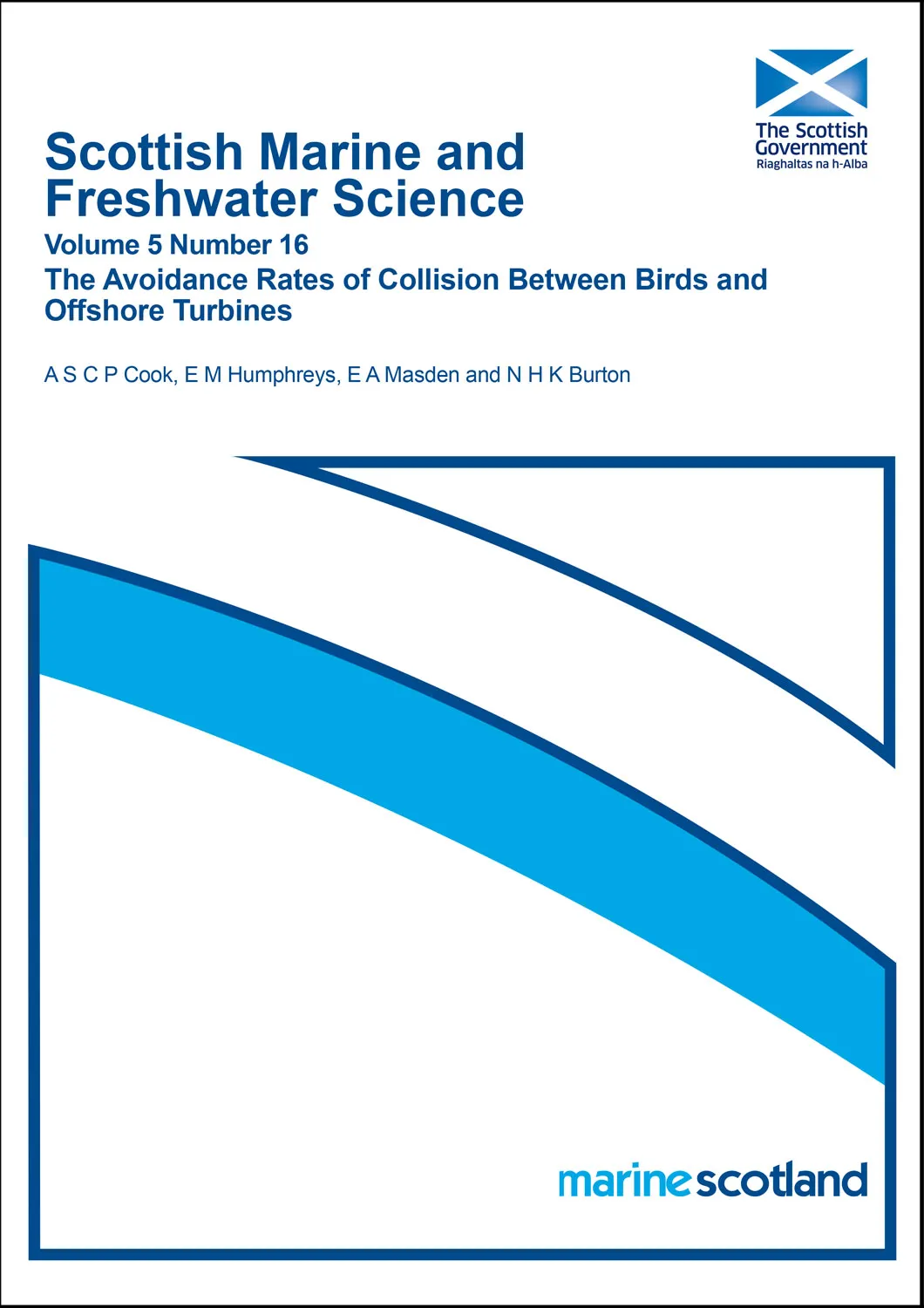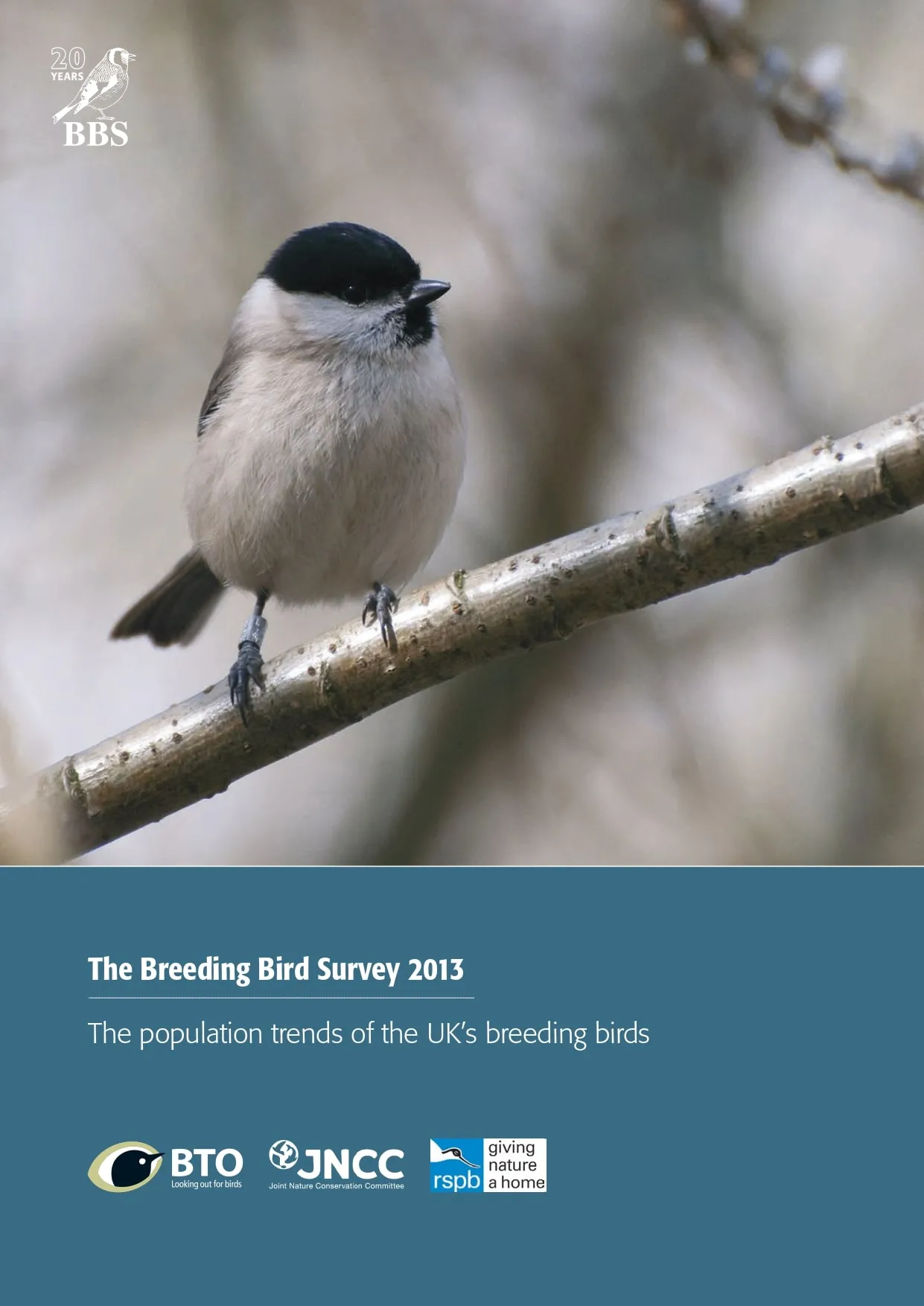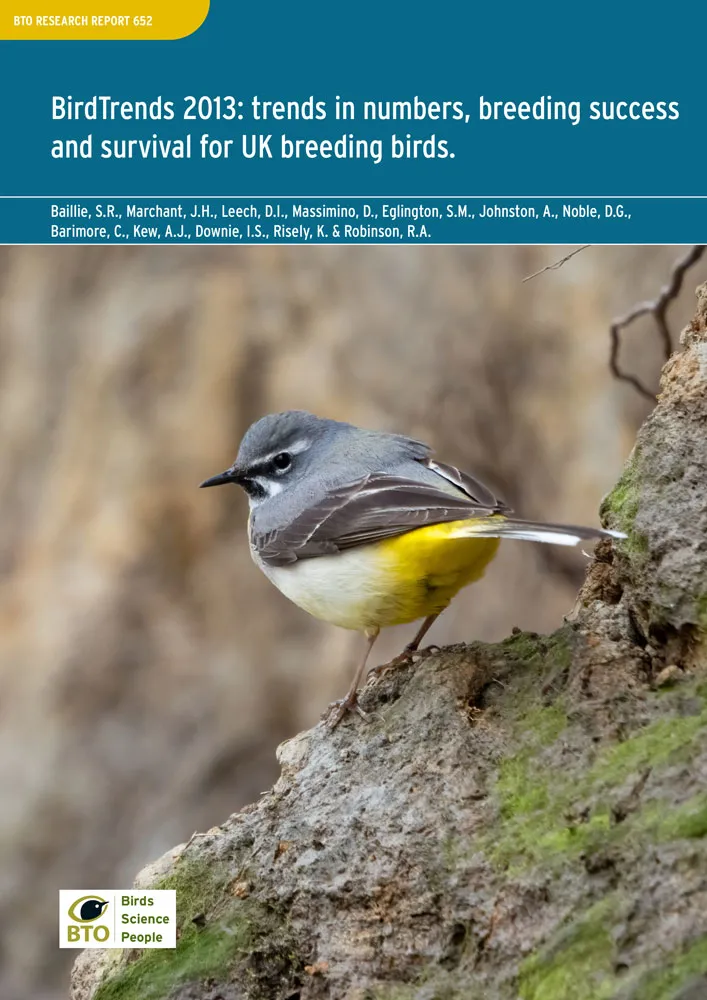BTO create and publish a variety of important articles, papers, journals and other publications, independently and with our partners, for organisations, government and the private sector. Some of our publications (books, guides and atlases) are also available to buy in our online shop.
Annual report of the Seabird Monitoring Programme
Seabird Population Trends and Causes of Change: 1986–2023
This report presents the latest seabird population trends in breeding abundance and productivity using data from the Seabird Monitoring Programme (SMP).
The report documents changes in the abundance and productivity of breeding seabird species in Britain and Ireland from 1986 to 2023, and provides a detailed account of the 2021, 2022 and 2023 breeding seasons.

Search settings
The avoidance rates of collision between birds and offshore turbines
Author: Cook, A.S.C.P., Humphreys, E.M., Masden, E.A., Band, W. & Burton, N.H.K.
Published: 2014
Report of work carried out by the British Trust for Ornithology in collaboration with the Environmental Research Institute on behalf of the Marine Scotland Science.Accurately estimating birds’ risk of collision with offshore wind turbines is a key part of the decision-making process for proposed renewable developments. However, the evidence base for quantifying the number of birds likely to avoid colliding with turbines is limited. Recent BTO-led work helping to fill this gap, improving the understanding of the impacts of offshore renewables on marine wildlife.
03.12.14
Research reports Research reports

A global assessment of the conservation status of the nominate subspecies of Eurasian oystercatcher (Haematopus ostralegus ostralegus)
Author: Van de Pol, M., Atkinson, P.W., Blew, J., Duriez, O.P.M.B., Ens, J., Hälterlein, B., Hötker, H., Laursen, K., Oosterbeek, K.H., Petersen A., Thorup, O., Tjørve, K., Triplet, P., Yésou, P.
Published: 2014
The nominate subspecies of Eurasian Oystercatchers Haematopus ostralegus ostralegus is the most abundant of all oystercatchers and the best studied. The main breeding and wintering areas are centered on the North Sea, but the distribution covers the European Atlantic coast to as far south as Ghana in western Africa. Population size increased strongly from the 1960s to 1990s to over one million birds. Although part of this expansion may have been caused by an ongoing successful adaptation to breeding inland, the main driving forces behind this increase are not well understood. Subsequently, the population size decreased substantially by about 200,000 individuals, mainly due to strong decreases in the Dutch-German-Danish Wadden Sea area. The decrease in the Netherlands is attributed largely to overexploitation by mechanical shell-fisheries; additional factors such as agricultural intensification and reduced eutrophication are likely to also have contributed. The causes for the decreases in Germany and Denmark are less well understood and urgently require further study. In other areas numbers are fairly stable or increasing, but good data for the Nordic countries are lacking. The global (and national) conservation status of H. o. ostralegus is classified as of ‘Least Concern’. We discuss other threats, such as habitat loss, climate change, hunting and human disturbance, and make prioritized recommendations for research and management.
26.08.14
Papers
The Breeding Bird Survey 2013
Author: Harris, S.J., Risely, K., Massimino, D., Newson, S.E., Eaton, M.A., Musgrove, A.J., Noble, D.G., Procter, D. & Baillie, S.R.
Published: 2014
10.08.14
Reports BBS Report

BirdTrends 2013
Author: Baillie, S.R., Marchant, J.H., Leech, D.I., Massimino, D., Eglington, S.M., Johnston, A., Noble, D.G., Barimore, C., Kew, A.J., Downie, I.S., Risely, K. & Robinson, R.A
Published: 2014
The BirdTrends 2020 report is a one-stop shop for authoritative information about the population status of the common breeding birds of the wider UK countryside. The report is based on data gathered by the many thousands of volunteers who contribute to BTO-led surveys.
01.08.14
Reports BirdTrends
